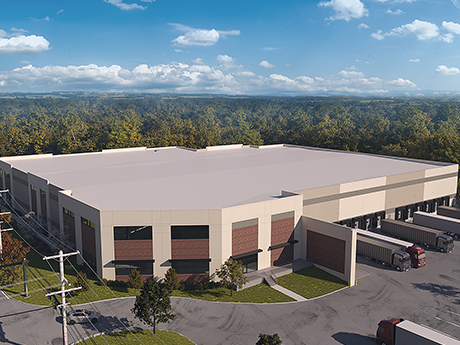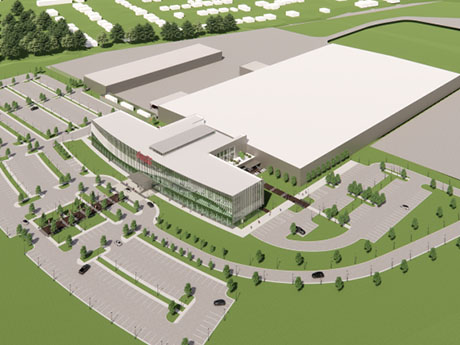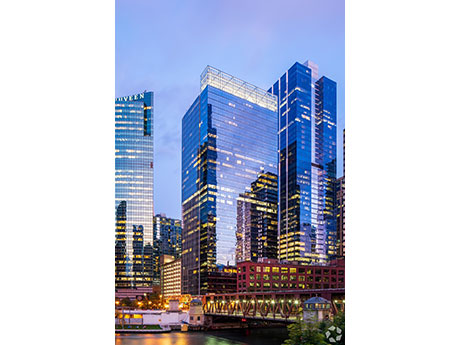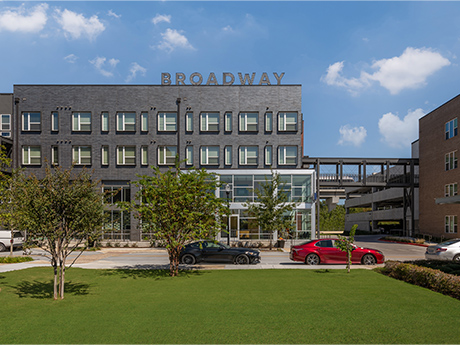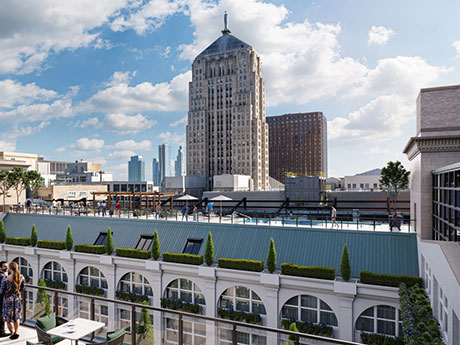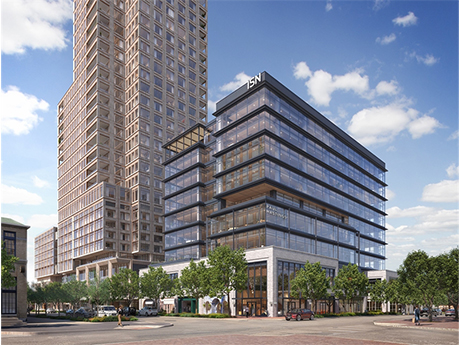The Nashville retail market has firmly established itself as one of the strongest and most dynamic in the United States. From luxury national chains to local entrepreneurial storefronts, retailers are increasingly drawn to the city’s diverse and resilient economy — and for good reason. Over the past decade, Nashville has been one of the fastest-growing cities in the country, with consistent year-over-year population and employment gains. This trajectory has been fueled by a favorable business climate, highlighted by the absence of a state income tax, as well as local policies that encourage corporate investment and relocation. The results are tangible: global and domestic companies alike have planted deep roots in Middle Tennessee. Major players such as AllianceBernstein, Amazon, Nissan, Bridgestone, Asurion and Deloitte have relocated or expanded here, joining long-standing Nashville-based giants like HCA Healthcare and Tractor Supply Co., both of which continue to grow their local footprint. This economic expansion has powered steady demand in the retail real estate sector. In just the past year, a wave of retailers — including Whataburger, In-N-Out Burger and 7-Eleven — have entered the Nashville market, underscoring its appeal to both national and regional brands. These additions further diversify a landscape already shaped …
Market Reports
By Taylor Williams So much for “survive ’til ’25.” Until a couple months ago, industrial owners in the markets of New Jersey and Eastern Pennsylvania had good reason to believe that 2025 would be a year in which ground-up development got back on track. And in those markets, which are defined by their density and sticky tenant demand, new supply is rarely a bad thing. According to the latest data available from Colliers, industrial vacancy rates in Philadelphia County, Southern New Jersey and the Lehigh Valley all rose in the fourth quarter by anywhere from 80 to 150 basis points. The regionwide vacancy rate stood at roughly 7 percent at the end of 2024, up from 6 percent in the fourth quarter of 2023. The Colliers report also noted that while more than 6 million square feet of predominantly speculative product came on line in the first quarter of 2025, subsequent deliveries were forecast to decline by 40 to 50 percent in each ensuing quarter, “signaling a slowdown in supply for the remainder of the year.” Demand in the region remains healthy but has undoubtedly moderated from record levels that prevailed several years ago, according to Scott Mertz, SIOR, president …
— By Rebecca Lloyd of Cushman & Wakefield — Industrial market conditions in Salt Lake City softened a bit in 2024, with new leasing activity totaling just over 5 million square feet — a 19 percent decrease from the 6.2 million square feet recorded in 2023. Despite this decline, new sublease activity saw a 33 percent year-over-year increase, reaching 735,000 square feet. Salt Lake City’s Northwest submarket remains the dominant area, accounting for 62 percent of total leasing activity in 2024. This was followed by the Southwest at 28 percent. Collectively, they comprise 90 percent of all leasing transactions in the market. Vacancy rates ended the year at 5.9 percent, a modest 50 basis point increase from the previous year. In a positive shift, the market closed the year with 3.7 million square feet of positive net absorption, a significant increase from the 2.3 million square feet recorded in 2023. The average asking rent for all product types stood at $0.81 per square foot on a triple-net basis, up from $0.80 at the end of 2023. Industrial construction remained robust, with nearly 4.7 million square feet of new space delivered in 2024. This added to the 7 million square feet …
Birmingham’s office market is holding its own with overall market occupancy at 82.6 percent as of fourth-quarter 2024. We saw a slower second half of the year, but that is to be expected during a presidential election year when companies often hit pause on significant real estate decisions. During the fourth quarter, Birmingham’s multi-tenant office market recorded negative absorption of 67,739 square feet, but that was a notable improvement from the negative 268,061 square feet recorded the previous quarter. Leasing activity for the quarter came in at 180,849 square feet, bringing the year-to-date total to just over 562,000 square feet — about 22 percent below the previous year’s pace. While definitely a slowdown, this performance is nothing out of step with the broader national trends. Signs of positive momentum The good news? Since the start of 2025, activity has picked up across the board. Tenants are back in the market touring space and rethinking their long-term office needs. Some are expanding, some are rightsizing to space that better fits how they work today and others are updating their office protocols to bring employees back in more regularly — all of which is driving movement in the market. In addition, several …
By Steven Bauer, Colliers The office towers that define Chicago’s landscape have unique histories and personalities, but not all are created equal in the eyes of the tenant. Buildings seeing the highest demand, classified even higher than Class A, are “trophy buildings” — buildings with high-quality finishes, newer and more efficient construction, and are often amenity rich with exclusive lounges, rooftop decks, fitness centers and private bars. It’s especially important in today’s market to distinguish between the two distinct building categories because while Chicago’s real estate market is a vibrant and complex one, there is more to the story than what you see in the headlines. While the overall vacancy rate in the Loop remains at a historic high above 25 percent, trophy space vacancy is under 10 percent, and demand continues to be robust. The story of flight to quality and flight to trophy assets has been told repeatedly since the COVID pandemic — complete with statistics that back the trend up. In the fourth quarter of 2024 alone, owners of trophy class buildings finalized anchor tenant renewals with Mayer Brown and PwC, both of whom kept roughly the same square footage as they had previously leased. With the …
By Jonathan Brown of JHP Architecture/Urban Design The essence of a thriving city lies in its diversity. Dynamic urban landscapes can achieve this effect by offering a robust mix of uses that cater to a wide range of people, keeping their streets and buildings lively and vibrant throughout the day and into the night. City administrators, architects and master planners have long sought the alchemical mixture for this success. However, zoning codes for various municipalities can often read like complex recipes: A cup of residential here, a few ounces of retail there, a pinch of municipal infrastructure all around, a dash of hidden parking and a sprinkling of community open space to really tie the flavors together! Successful placemaking is not simply the sum composition of all its parts; it requires thoughtful integration and balance. With today’s housing shortages, multifamily developments make sense, but integrating retail uses within those projects is challenging. This is despite the fact that many comprehensive plans and zoning codes mandate specific retail quotas, which may not be easily supported by the economics. Creating vibrant, engaging spaces requires more than just ticking boxes in the zoning code. Stakeholders want to avoid ending up with a …
— By Phil Brierley of JLL — The Salt Lake City office market continues to strengthen despite strong systemic headwinds. Last year was a banner year for leasing, with 4.8 million square feet of total leasing velocity. Silicon Slopes once again led all submarkets, representing 43 percent of all leasing. This was followed by the Greater CBD with 25 percent. Absorption was positive through the fourth quarter (for the second consecutive time) at 72,861 square feet, offsetting move-outs earlier in the year. Overall vacancy peaked in 2023 at 18.9 percent and is finally trending in the right direction. It finished the year at 18.6 percent. Subleasing is still a soft spot, especially in Silicon Slopes, with 300,000 square feet of new sublease space hitting the market in the fourth quarter of 2024 alone. Sales volumes rebounded after a dismal 2023, clocking in at $518 million in 2024. RCA notes this is close to the trailing 10-year average of $587 million. Much of that velocity was driven by user sales, including Salt Lake County’s acquisition of the Peace Coliseum, Canyons School District’s purchase of the eBay regional headquarters, the University of Utah’s acquisition of City Center downtown and Onset Financials’ acquisition …
Birmingham’s retail market continues to demonstrate resilience despite national economic challenges. With a vacancy rate of 3.8 percent — slightly below the national average of 4.1 percent — and rental rates holding steady at $13.13 per square foot, the city remains an attractive destination for both investors and tenants. However, rising interest rates have slowed development and softened transaction volumes, reshaping the investment landscape. Macroeconomic trends The intersection of economic pressures and shifting consumer habits is redefining Birmingham’s retail landscape. Across the nation, big-box retailer bankruptcies have contributed to negative net absorption of 346,200 square feet over the past year, and Birmingham has felt similar effects. The closure of Conn’s HomePlus, among other retailers, has contributed to this contraction. Despite these challenges, suburban retail demand remains robust. Homewood, Hoover and Alabaster are experiencing continued growth, and Crestwood Festival Shopping Center has added new tenants like Fun City Adventure and Armor Gym occupying 100,000 square feet. These trends highlight the increasing popularity of experiential retail, as consumers gravitate toward destinations that offer more than just traditional shopping. Development slows New retail construction has slowed significantly, with only 130,000 square feet delivered in the past year — well below historical averages. However, …
By Trina Sandschafer, AIA, Project Management Advisors Adaptation and reinvention are core parts of what makes American cities great, and Chicago is a prime example. Whether rebuilding, reimagining space for modern usage or creating new neighborhoods from formerly empty lots, the city has become known for its unique ability to bring new energy and life to formerly underutilized areas. Chicago knows how to reimagine the built environment and is leading the way with several transformative development strategies. Adaptive reuse: A well-tested Chicago tactic Chicago’s long history of adaptive reuse began with the pioneering residential loft developers. In the wake of nationwide manufacturing declines, these enterprising developers saw opportunity in the city’s largely vacant warehouses and manufacturing buildings. The success of these early loft conversions encouraged further reimagining of Chicago’s aging industrial and office stock into condominiums, apartments, offices, entertainment venues and hospitality spaces, which continue to this day. Now, adaptive reuse strategies are helping to increase the supply of housing and restore economic viability to communities dealing with the lingering impact of the pandemic on local businesses. Converting legacy structures to new and better uses is more environmentally sustainable and can be more cost-effective than demolishing older buildings and starting …
The “flight to quality” trend has been ensconced in the embattled office sector for much of the post-pandemic era, and it’s showing little sign of slowing in the major markets of Texas. With overall tenant demand depressed in the aftermath of COVID-19, opportunities existed in droves for office users to upgrade their spaces and move into buildings with desirable amenities and vibrant surrounding neighborhoods. In doing so, these companies sought to incentivize their employees to come back to the office. Simultaneously, owners that invested in wellness features and activation programs for their properties sought to gain a leg up on the competition — and make tough conversations with lenders a bit more palatable. Whether or not those initiatives worked as intended undoubtedly varies greatly from company to company and owner to owner. But after multiple years of stagnant occupancy and rent growth, the targeting of seemingly superior buildings and locations has come to represent more than just opportunistic decision-making by tenants. It’s a movement that has created visible delineation among winning and losing submarkets, a strategy that embodies basic financial prudence and perhaps a necessary evil — assuming that office usage is finally starting to rebound in a meaningful …


